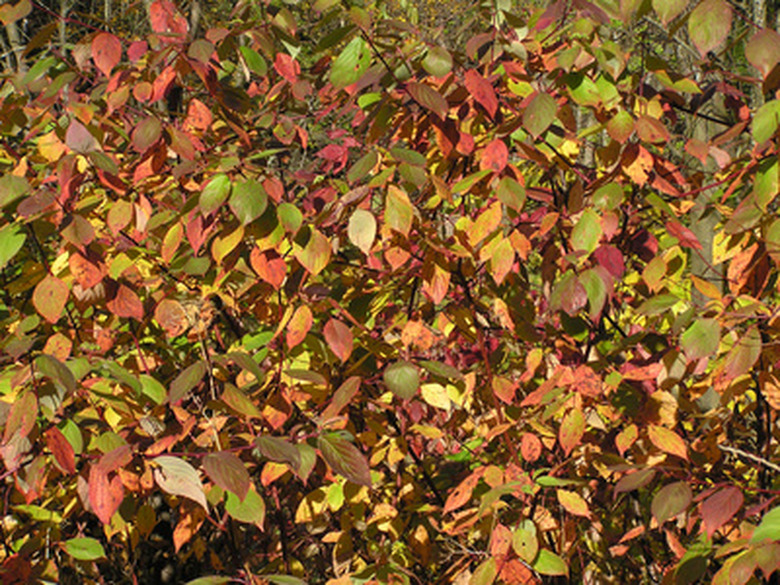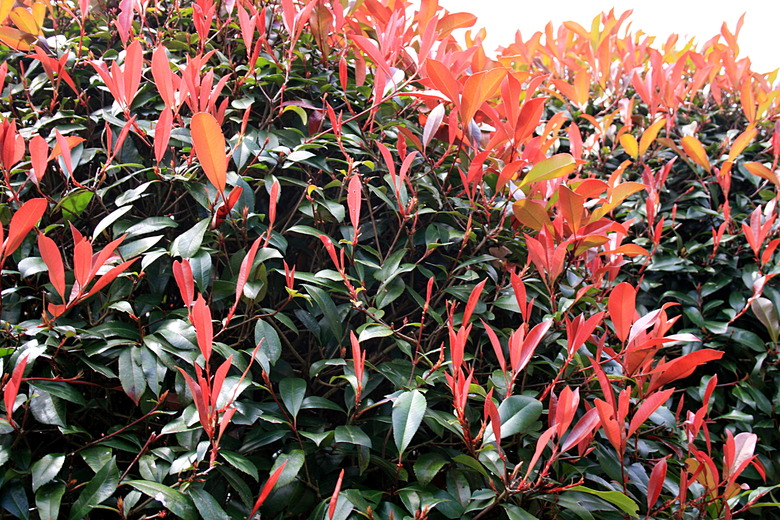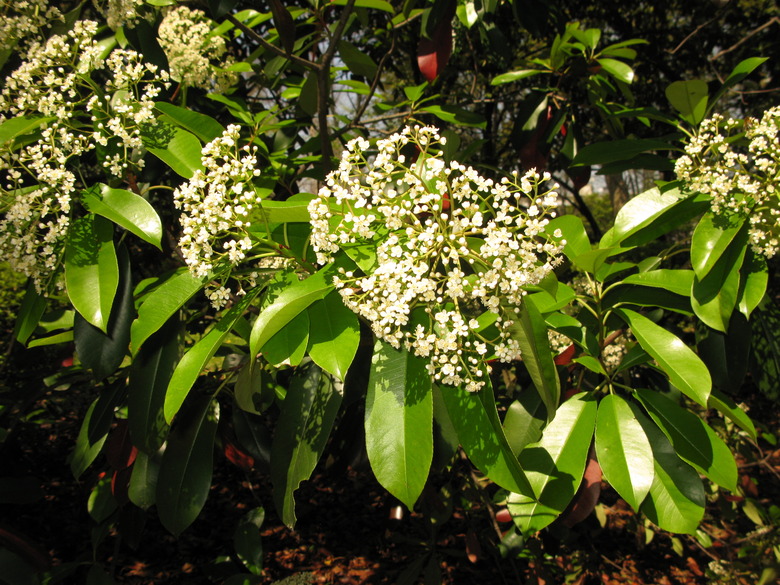How To Plant & Care For Red Tip Photinia
The red tip photinia (Photinia x fraseri, USDA hardiness zones 7 to 9), or Fraser photinia, is an evergreen shrub in the family Rosaceae that gets its common name from new leaves, which have a red color when they emerge.
This shrub has long been popular as a hedge and privacy screen in the southern U.S. However, its propensity to disease has led to a decrease in its use.
Red Photinia Identification
The red photinia is a large shrub that can grow to be 10 feet tall and 15 feet wide. It has leathery, oval-shaped red leaves that eventually turn dark green. The edges of the leaves are serrated.
This plant produces panicles of small, white flowers in early spring. Though this hybrid is in the rose family, its flowers do not have a pleasant smell.
Planting Red Tip Photinia
Red tip photinia plants are highly susceptible to a fungal disease known as Entomosporium leaf spot that also affects some of the 60 species of plants across different genera. Reddish brown spots appear on the foliage of affected plants. As summer progresses, the plants lose all of their leaves.
Copper fungicides can be used to protect new growth from becoming infected and must be applied constantly during hot, rainy periods, but will not work as a remedy for already affected leaves.
Tip
Planting the red tip photinia is not advisable due to its susceptibility to a disease known as Entomosporium leaf spot that can result in defoliation and death of the shrub.
Entomosporium leaf spot is especially problematic in the humid South, as well as other parts of the country. For this reason, planting red tip photinia is rarely recommended.
Alternatives to Red Tip Photinia
Instead of planting red tip photinia, in many cases it makes more sense to consider plants that are not as prone to a devastating disease.
Alternative options include the Carolina cherry laurel (Prunus caroliniana, zones 7 to 10), which, like the red tipped photinia, has a fast growth rate and responds well to heavy pruning. For another species with leaves that emerge red, consider the Japanese ternstroemia (Ternstroemia gymnanthera, zones 7 to 9), which can grow to a similar height and width.
The Chinese photinia (Photinia serratifolia, zones 6 to 9) is said to be more resistant to Entomosporium leaf spot than red tip photinia, however it is susceptible to other diseases, such as fire blight.
Red Tip Photinia Care
Caring for red tip photinia that is already in your landscape means taking steps to control the spread of Entomosporium leaf spot. That means pruning this plant during the winter months rather than during the growing season, when new growth is most vulnerable to the disease.
Tip
Pruning red tip photinia in the winter in order to give these shrubs more air circulation is imperative.
A goal of pruning red tip photinia is to give these plants good air circulation to discourage the development of Entomosporium leaf spot disease, as well as other fungal leaf diseases, such as powdery mildew.
Fungicides to control Entomosporium leaf spot disease should be applied when new growth emerges, which is when treatment is most effective. Again, already diseased foliage cannot be rectified using any method.


